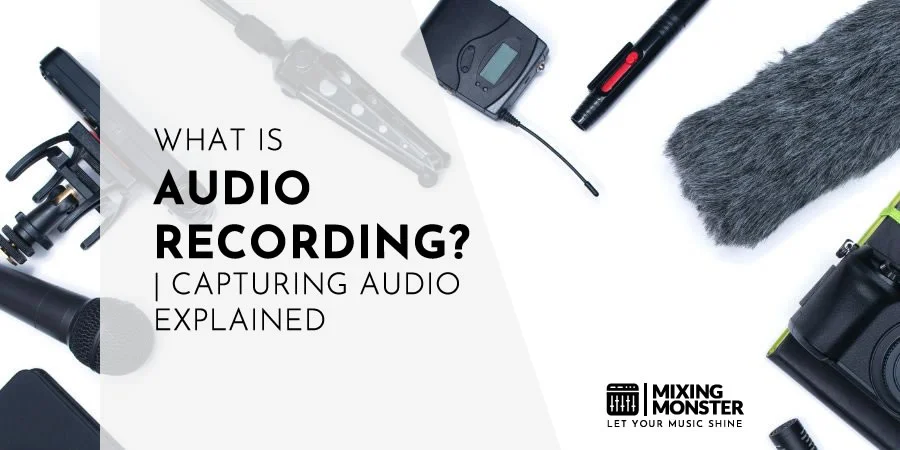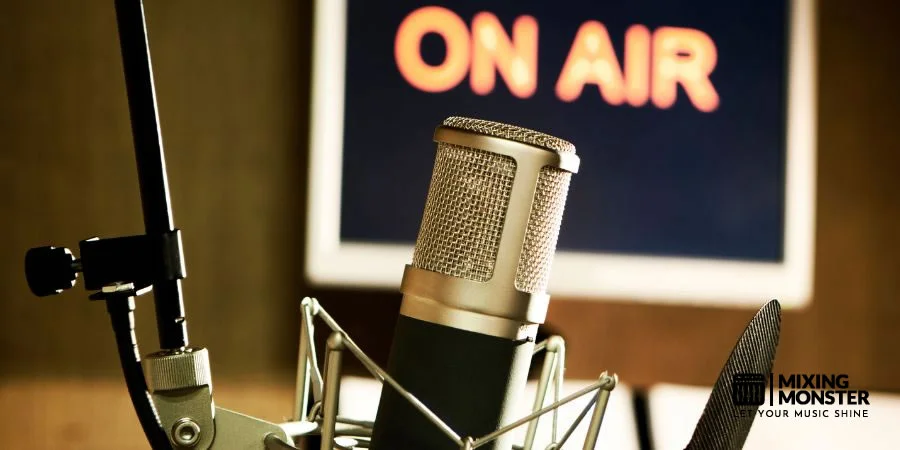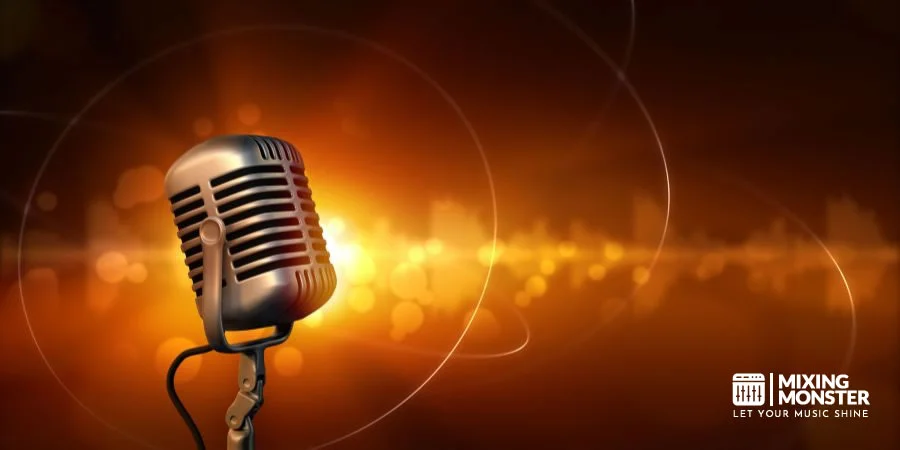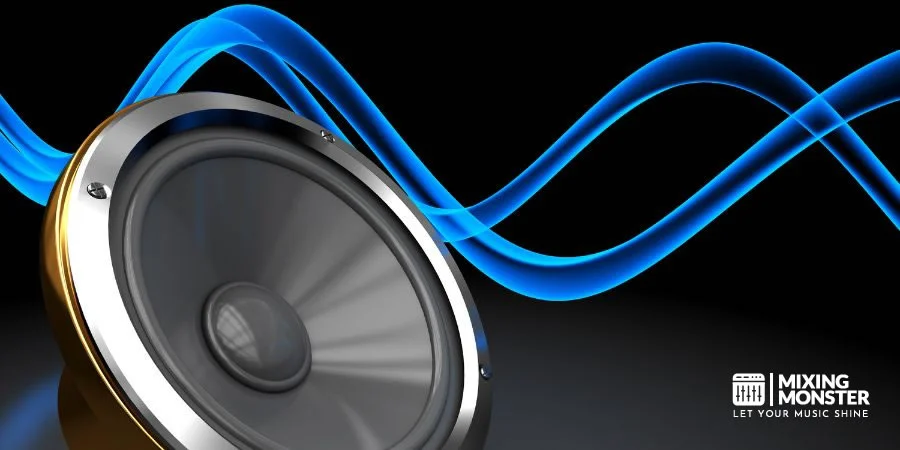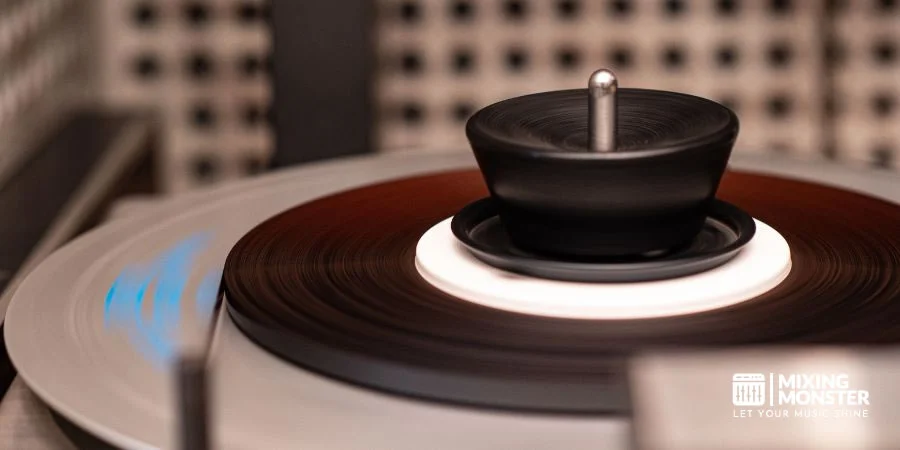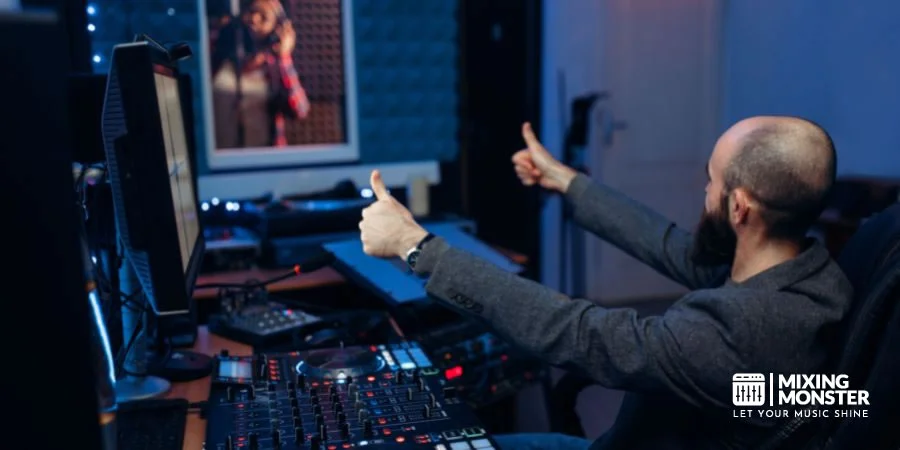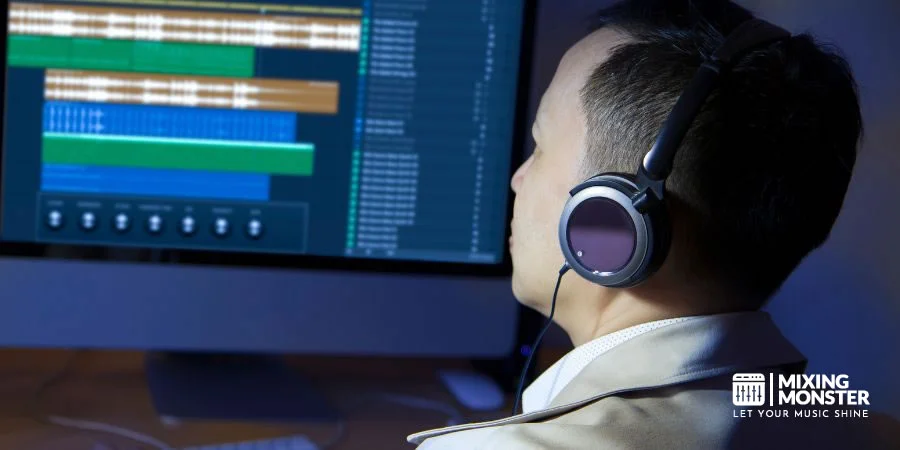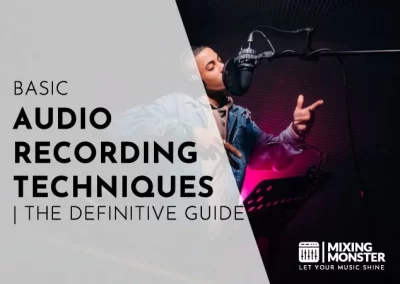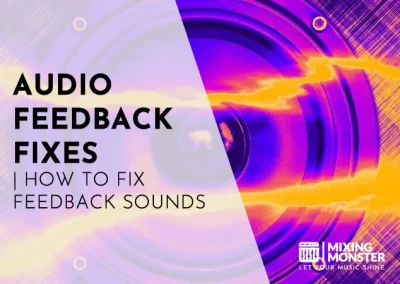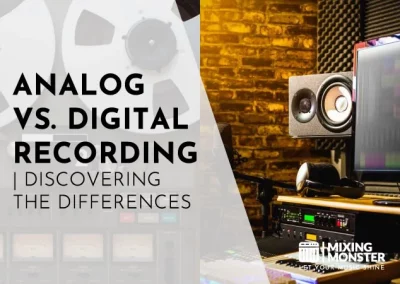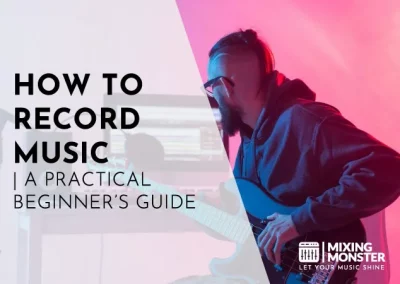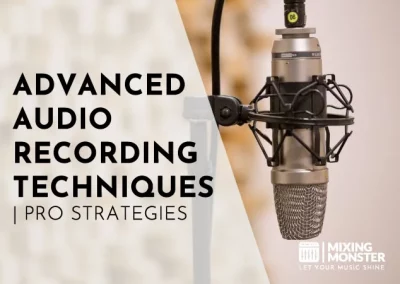Audio recording is used for a wide range of purposes, including music production, podcasting, radio broadcasting, film and video production, and many other applications. It is an essential tool for musicians, producers, and sound engineers, as well as anyone who wants to capture and preserve sound for future playback.
Audio recording is the process of capturing sound waves and converting them into a digital or analog format that can be stored and played back later. This involves using a microphone to capture sound waves, which are then converted into an electrical signal. The electrical signal can be stored in various formats, such as digital files or analog formats.
Audio recording not only captures sound, but it also shapes the way we experience and understand the world around us, from the music we listen to, to the movies we watch, and the podcasts we hear – so why not discover more about this fascinating subject?
Table Of Contents
1. What Does Audio Recording Mean? Basic Steps Of Audio Recording
2. How Sound Is Captured In Audio Recording
3. Basic Principles Of Sound
4. Analog Vs Digital Recording Methods
5. The Role Of Sound Engineers And Producers In Audio Recording
6. The Various Applications Of Audio Recording
7. What Do You Need To Record Audio?
8. Popular Software And Hardware Used In Audio Recording
9. What Is The Best Format To Record Audio?
10. Embracing The Power Of Audio Recording

1. What Does Audio Recording Mean? Basic Steps Of Audio Recording
From the earliest days of human history, sound has played a fundamental role in our lives. Whether it’s the songs we sing, the stories we tell, or the sounds of nature around us, sound is a constant presence that shapes our experiences and our understanding of the world.
With the advent of technology, we have gained the ability to capture and preserve sound in ways that were once unimaginable. Audio recording, in particular, has revolutionized the way we create, share, and consume music, podcasts, films, and other forms of media.
Audio recording in general is the process of capturing sound using a microphone and converting it into a storable format.
The 4 Basic Steps Of Audio Recording:
- Capturing The Sound:
The first step in the audio recording process is to capture the sound using a microphone. The microphone converts the sound waves into an electrical signal, which is then sent to the recording device. - Storing The Sound:
Once the sound is captured, it needs to be stored in a format that can be played back later. This can be done using various formats, including digital files like MP3, WAV, or AIFF, or analog formats like cassette tapes or vinyl records. - Processing The Sound:
After the sound is captured and stored, it may need to be processed to achieve the desired sound quality. This can include adjusting the volume, equalization, compression, and other effects to enhance or manipulate the sound. - Playback:
Once the sound is captured, stored, and processed, it can be played back using various devices such as speakers, headphones, or other audio playback devices.
Audio recording plays a crucial role in many applications, including music production, podcasting, radio broadcasting, film and video production, and many others. It allows us to capture, preserve, and manipulate sound in a way that was once impossible, opening up new possibilities for creativity, expression, and communication.
2. How Sound Is Captured In Audio Recording
Sound is a form of energy that travels through the air in the form of sound waves.
Sound waves are created by a vibrating object, such as a guitar string or a person’s vocal cords. These sound waves travel through the air and are captured by a microphone in the process of audio recording.
In audio recording, a microphone converts the sound waves into an electrical signal, which can then be stored and manipulated using various recording devices and software. The microphone is designed to capture sound waves in a way that accurately represents the original source of the sound.
There are different types of microphones used in audio recording, each with its own unique characteristics. The two most common types of microphones used in audio recording are dynamic microphones and condenser microphones.
Dynamic microphones are rugged and durable, making them ideal for use in live performances and outdoor recordings. Condenser microphones are more sensitive and responsive, making them ideal for studio recordings and other situations where a high level of detail and accuracy is required.
Once the sound is captured by the microphone, it can be processed using various techniques such as equalization, compression, and other effects to enhance or manipulate the sound. The processed sound can then be stored in various formats, such as digital files or analog formats, and played back using different audio playback devices.
Overall, the principles of sound and how it is captured in audio recording are fundamental to the art and science of audio recording. Understanding these principles is essential for anyone interested in creating high-quality audio recordings.
3. Basic Principles Of Sound
The principles of sound are a crucial part of understanding how sound works and how it is captured in audio recording. Understanding these principles is essential in the domain of audio recording. Let’s explain some of the most important aspects of sound:
Basic Principles Of Sound:
- Sound Waves:
Sound waves are created by a vibrating object. These waves travel through the air in a series of compressions and rarefactions, which cause changes in air pressure. This is what we hear as sound. - Frequency:
Frequency refers to the number of cycles per second that a sound wave completes. The unit of measurement for frequency is hertz (Hz). Higher frequencies result in higher-pitched sounds, while lower frequencies result in lower-pitched sounds. - Amplitude:
Amplitude refers to the strength or intensity of a sound wave. The unit of measurement for amplitude is decibels (dB). Higher amplitudes result in louder sounds, while lower amplitudes result in quieter sounds. - Wavelength:
Wavelength refers to the distance between two consecutive peaks or troughs of a sound wave. The wavelength of a sound wave is inversely proportional to its frequency. - Phase:
Phase refers to the position of a sound wave at a specific point in time. When two sound waves are in phase, their peaks and troughs line up, resulting in a stronger signal. When two sound waves are out of phase, they cancel each other out, resulting in a weaker signal. - Reflection And Absorption:
When sound waves encounter a surface, they can be reflected or absorbed. Hard surfaces like walls and floors reflect sound waves, while soft surfaces like curtains and carpets absorb sound waves. - Doppler Effect:
The Doppler effect is the change in frequency of a sound wave when the source of the sound is moving. When the source of the sound is moving towards the listener, the frequency of the sound wave increases, resulting in a higher-pitched sound. When the source of the sound is moving away from the listener, the frequency of the sound wave decreases, resulting in a lower-pitched sound.
Let’s continue with taking a look at the two different types of audio recording: analog and digital recording.
4. Analog Vs Digital Recording Methods
Analog recording and digital recording are two distinct methods of capturing and storing audio signals. Here is a description of each method, along with an example for each:
Analog Recording:
Analog recording is a method of capturing sound waves using an analog device, such as a tape recorder or vinyl record. In analog recording, the sound waves are converted into an electrical signal that is then stored directly onto a physical medium, such as magnetic tape or a vinyl disc. The signal is stored as a continuous waveform, which can be played back by an analog playback device.
Analog recording has a warm, natural sound that many people find pleasing. However, analog recordings can also have some drawbacks, such as a higher noise floor and a tendency to degrade over time.
Example Of Analog Recording: A classic example of analog recording is the vinyl record. Vinyl records are created by cutting a groove into a master disc, which is then used to create a metal stamper. The stamper is used to press vinyl records, which can then be played back on a turntable using a stylus.
Digital Recording:
Digital recording is a method of capturing sound waves using a digital device, such as a computer or digital recorder. In digital recording, the sound waves are converted into a series of numbers, which are then stored as digital data on a computer hard drive or other digital storage medium. The digital data can then be manipulated and processed using digital audio software.
Digital recording has many advantages over analog recording, including a lower noise floor, greater dynamic range, and the ability to store and manipulate large amounts of data. However, some people find that digital recordings can sound cold or sterile compared to analog recordings.
Example Of Digital Recording: An example of digital recording is the Compact Disc (CD). CDs store audio data as a series of digital numbers, which are read by a laser in a CD player. The digital data is then converted back into an analog signal, which can be played through speakers or headphones.
Both analog and digital recording methods have their strengths and weaknesses, and each can be used to create high-quality recordings depending on the desired outcome and production goals.

5. The Role Of Sound Engineers And Producers In Audio Recording
Sound engineers and producers play critical roles in the audio recording process. A professional audio recording project stands and falls with the contribution of a seasoned recording engineer to the final product.
In recording and mixing, sound engineers and producers work closely to ensure that the recording session runs smoothly and that the sound is captured correctly. This involves selecting the appropriate microphones, positioning them correctly, and adjusting levels and EQ as needed.
During mixing, they work together to balance the various tracks, apply effects, and make any necessary adjustments to achieve the desired sound.
In arranging and production, producers often work closely with the artists to determine the overall sound and feel of the project. This involves selecting instrumentation, deciding on arrangements, and making creative decisions about how the songs should be presented. Sound engineers then work to capture this vision in the recording process.
In editing and post-production, sound engineers and producers work together to edit and refine the finished recordings. This involves tasks such as removing unwanted noise, tuning vocals, and adding additional effects or overdubs as needed.
Finally, in mastering sound engineers and producers work together to ensure that the tracks sound consistent and balanced across different playback systems.
Sound engineers and producers are crucial in creating high-quality recordings that sound polished and professional. They bring technical expertise, creative vision, and a keen ear for detail to the recording process, and help artists to achieve their sonic goals.
Here’s a short example from one of our recording sessions we had which should underline the importance of the collaboration between the artist and the recording engineer:
Some while ago we recorded a female singer, who was in the studio recording her first album. Pretty soon in the recording process she realized something was off with the audio. She told us her voice sounded “hollow and distant”, lacking the warmth and emotion she was hoping for.
We tried out different microphones, and after experimenting with a few options,we actually found the perfect match, the good old Shure SM57! Suddenly, her voice came alive, filling the studio with a rich, full sound that perfectly captured the essence of her music.
This simple example underline the fact that the right tools and techniques can make all the difference in audio recording.
6. The Various Applications Of Audio Recording
Audio recording has many different applications in a variety of fields. Let’s take a look at the most common applications of audio recording:
Applications Of Audio Recording:
-
Music Production:
One of the most well-known applications of audio recording is in music production. Musicians and producers use audio recording to capture performances, create demos, and record albums. -
Podcasting:
Podcasts have become increasingly popular in recent years, and audio recording is a critical component of the podcasting process. Podcasters use audio recording to capture interviews, monologues, and other content that can be edited and distributed online. -
Film And Video Production:
Audio recording is also an important part of film and video production. Sound engineers use microphones and other equipment to capture dialogue, sound effects, and music, which are then mixed together to create the final audio track for the film or video. -
Live Events And Streaming:
Audio recording is also used in live events, such as concerts, theater productions, sporting events or live streams. Sound engineers use microphones and mixing boards to capture and mix live performances in real time. -
Education And Training:
Audio recording is also used in education and training, such as for language learning, audiobooks, and instructional videos. It can help learners to practice listening and speaking skills, and can provide a valuable resource for self-directed learning.
Audio recording has become an essential part of many industries and fields. It has the power to capture and convey sound in a way that is meaningful and impactful.
7. What Do You Need To Record Audio?
In order to record audio, you need several key pieces of equipment and software. You can certainly spend a lot of money on professional audio recording gear, however, fairly priced mid-class options often offer solid recording performance as well.
Basic Requirements For Recording Audio:
- Microphone:
A microphone is used to capture sound and convert it into an electrical signal that can be recorded. There are many different types of microphones, each with its own strengths and weaknesses. - Cables And Stands:
You’ll need cables (e.g. XLR) to connect your microphone and audio interface (e.g. USB), and stands to hold your microphone in place. - Audio Interface:
An audio interface is used to convert the analog signal from the microphone into a digital signal that can be recorded on a computer or other digital device. - Computer Or Digital Recorder:
To record and store audio, you need a computer or digital recorder. There are many different types of software and hardware available for recording audio, ranging from basic software built into your computer’s operating system to high-end digital audio workstations (DAWs) used in professional recording studios. - Monitoring System:
It’s important to be able to hear what you’re recording, so you’ll need a monitoring system that allows you to listen to the sound in real-time. This can be a pair of headphones or a set of speakers.
To record audio you need a combination of hardware and software that allows you to capture, store, and edit sound. With the right equipment and a little bit of know-how, anyone can record high-quality audio in a variety of settings.
8. Popular Software And Hardware Used In Audio Recording
There are many different software and hardware options available for audio recording, each with its own strengths and weaknesses. The best choice will depend on your specific needs, budget, and level of experience.
To get started in audio recording, here are some popular software and hardware used in audio recording, including some industry standard options:
Software (Digital Audio Workstations / DAWs) Used In Audio Recording:
- Pro Tools:
Pro Tools is a digital audio workstation (DAW) used in professional recording studios around the world. It is considered the industry standard for audio recording and mixing. - Logic Pro:
Logic Pro is a DAW developed by Apple and is popular among musicians, composers, and producers. It includes a wide range of virtual instruments, effects, and loops. - Ableton Live:
Ableton Live is a DAW that is popular among electronic musicians and DJs. It is designed for live performance as well as studio production. - FL Studio:
FL Studio (formerly known as Fruity Loops) is a DAW that is popular among hip-hop and electronic music producers. - Cubase:
Cubase is a DAW developed by Steinberg and is used in professional recording studios and by home producers alike. - GarageBand:
GarageBand is a DAW that comes free with Apple computers. It is a great option for beginners and those on a budget.
The choice of DAW will depend on the individual’s needs, preferences, and budget. It is common for audio professionals to use multiple DAWs depending on the project requirements.
Hardware Used In Audio Recording:
- Microphones:
There are many different types of microphones used in audio recording, including dynamic, condenser, and ribbon microphones. Popular brands include Shure, AKG, Neumann, and Audio-Technica. - Audio Interfaces:
An audio interface is used to convert analog signals from microphones and instruments into digital signals that can be recorded on a computer. Popular brands include Focusrite, Apogee, and Universal Audio. - Studio Monitors:
Studio monitors are speakers designed specifically for audio recording and mixing. Popular brands include Yamaha, KRK, and Genelec. - Digital Recorders:
Digital recorders are portable devices used to record audio on-the-go. Popular brands include Zoom, Tascam, and Roland.
9. What Is The Best Format To Record Audio?
The best format to record audio depends on a variety of factors, including the intended use of the recording, the available storage space, and the desired sound quality. Let’s focus on the commonly used digital audio formats that are available in audio recording, while explaining their strengths and weaknesses:
Commonly Used Digital Audio Formats Including Their Advantages And Disadvantages:
- WAV (Waveform Audio File Format):
WAV is a lossless format, which means that it retains all of the original audio data without any compression. This results in high-quality recordings that are suitable for professional use. However, WAV files are large and can take up a lot of storage space. - AIFF (Audio Interchange File Format):
AIFF is a lossless format that is similar to WAV. It is commonly used on Apple computers and is suitable for high-quality recordings. Like WAV, AIFF files are large and can take up a lot of storage space. - MP3 (MPEG-1 Audio Layer 3):
MP3 is a compressed format that is commonly used for music playback on portable devices and online streaming services. It is a lossy format, which means that it discards some of the original audio data in order to reduce the file size. MP3 files are much smaller than WAV or AIFF files, but they may not be suitable for professional use due to the loss of audio quality. - FLAC (Free Lossless Audio Codec):
FLAC is a lossless format that compresses audio data without losing any information. It is a popular format among audiophiles who want high-quality recordings that take up less storage space than WAV or AIFF files. However, FLAC files may not be compatible with all playback devices. - AAC (Advanced Audio Coding):
AAC is a compressed format that is commonly used for music playback on Apple devices. It is a lossy format, but it provides better sound quality than MP3 at the same file size. However, like FLAC, AAC may not be compatible with all playback devices.
Choosing the right audio format to record audio will depend on the specific needs of the recording project. Lossless formats like WAV and AIFF are suitable for professional use, while compressed formats like MP3 and AAC may be more appropriate for casual use or online distribution. Lossless compressed formats like FLAC may provide a good balance between high-quality audio and efficient storage.
10. Embracing The Power Of Audio Recording
In conclusion, audio recording is a fundamental process that involves capturing sound waves and converting them into digital data that can be stored, edited, and shared.
From professional studios to home recordings, audio recording plays a crucial role in many industries and creative endeavors. By understanding the basic principles of sound and the tools used in audio recording, anyone can capture and manipulate sound to create high-quality recordings.
Whether you are a musician, a filmmaker, or a podcaster, audio recording is a valuable skill that can enhance your work and bring your ideas to life.

